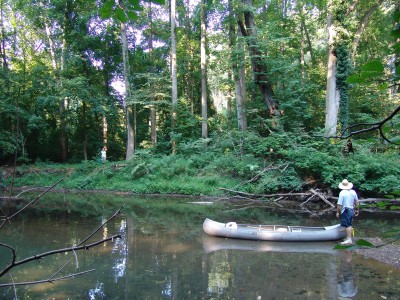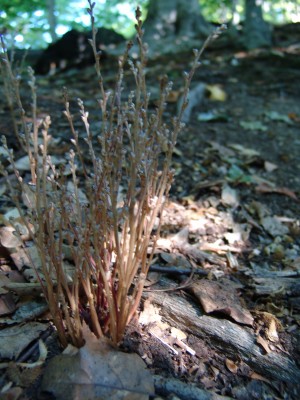Epifagus virginiana
Bordering Swarthmore College and the Scott Arboretum are the Crum Woods. In the last several hundreds of years these woods have been logged, significantly impacted by humans and more recently ravaged by a large white-tailed deer population and the invasion of many invasive exotic species. However, this ecosystem still has a great representation of our native plant communities. The canopy is dominated by climax hardwood species, such as Liriodendron tulipifera, tulip tree; Quercus rubra, red oak; Quercus alba, white oak; and Fagus grandifolia, American beech. The shrub layer includes our native witch hazel, Hamamelis virginiana; arrow wood viburnum, Viburnum dentatum; maple leaf viburnum, Viburnum acerifolium; and spicebush, Lindera benzoin. Many of the herbaceous plants have been grazed to near extinction by the over-abundant deer population.
One quasi-herbaceous plant that still remains is the very intriguing beech drops, Epifagus virginiana. This can be seen throughout the Crum Woods growing at the base of the American beech in the soil surface above the roots. The genus translates to “upon the beech.” Epifagus is a member of the family Orobanchaceae which contains several saprophytic and parasitic species. This plant is a parasite on the roots of Fagus grandifolia. Epifagus produces no chlorophyll, therefore, the stems are brown throughout the entire year.
The native American Indians used the beech drops for the treatment of diarrhea, dysentery, mouth sores, and cold sores.







No Comments